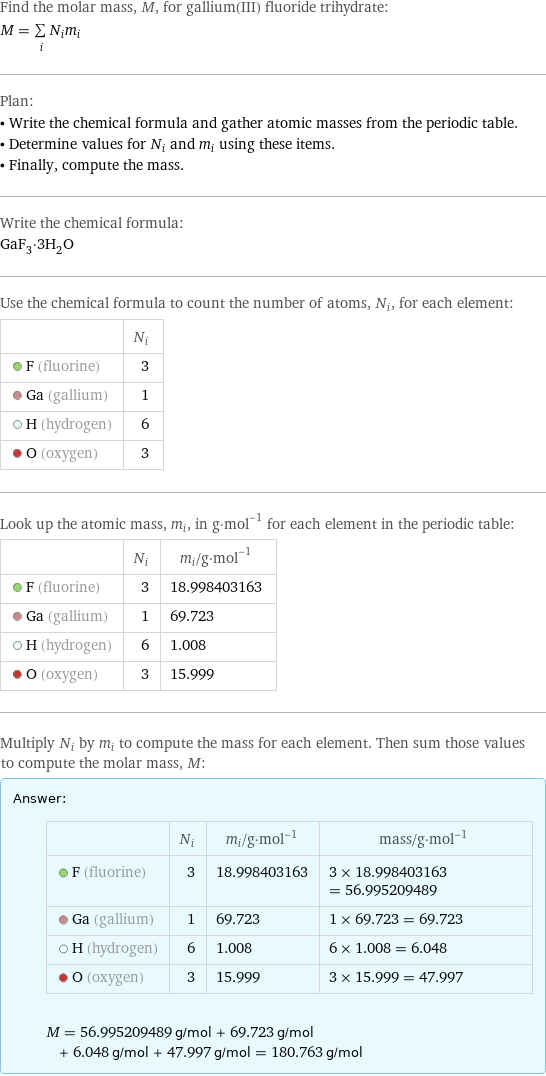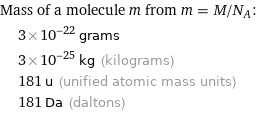Input interpretation

gallium(III) fluoride trihydrate | molar mass
Result

Find the molar mass, M, for gallium(III) fluoride trihydrate: M = sum _iN_im_i Plan: • Write the chemical formula and gather atomic masses from the periodic table. • Determine values for N_i and m_i using these items. • Finally, compute the mass. Write the chemical formula: GaF_3·3H_2O Use the chemical formula to count the number of atoms, N_i, for each element: | N_i F (fluorine) | 3 Ga (gallium) | 1 H (hydrogen) | 6 O (oxygen) | 3 Look up the atomic mass, m_i, in g·mol^(-1) for each element in the periodic table: | N_i | m_i/g·mol^(-1) F (fluorine) | 3 | 18.998403163 Ga (gallium) | 1 | 69.723 H (hydrogen) | 6 | 1.008 O (oxygen) | 3 | 15.999 Multiply N_i by m_i to compute the mass for each element. Then sum those values to compute the molar mass, M: Answer: | | | N_i | m_i/g·mol^(-1) | mass/g·mol^(-1) F (fluorine) | 3 | 18.998403163 | 3 × 18.998403163 = 56.995209489 Ga (gallium) | 1 | 69.723 | 1 × 69.723 = 69.723 H (hydrogen) | 6 | 1.008 | 6 × 1.008 = 6.048 O (oxygen) | 3 | 15.999 | 3 × 15.999 = 47.997 M = 56.995209489 g/mol + 69.723 g/mol + 6.048 g/mol + 47.997 g/mol = 180.763 g/mol
Unit conversion

0.18076 kg/mol (kilograms per mole)
Comparisons

≈ 0.25 × molar mass of fullerene ( ≈ 721 g/mol )

≈ 0.93 × molar mass of caffeine ( ≈ 194 g/mol )

≈ 3.1 × molar mass of sodium chloride ( ≈ 58 g/mol )
Corresponding quantities

Mass of a molecule m from m = M/N_A: | 3×10^-22 grams | 3×10^-25 kg (kilograms) | 181 u (unified atomic mass units) | 181 Da (daltons)

Relative molecular mass M_r from M_r = M_u/M: | 181